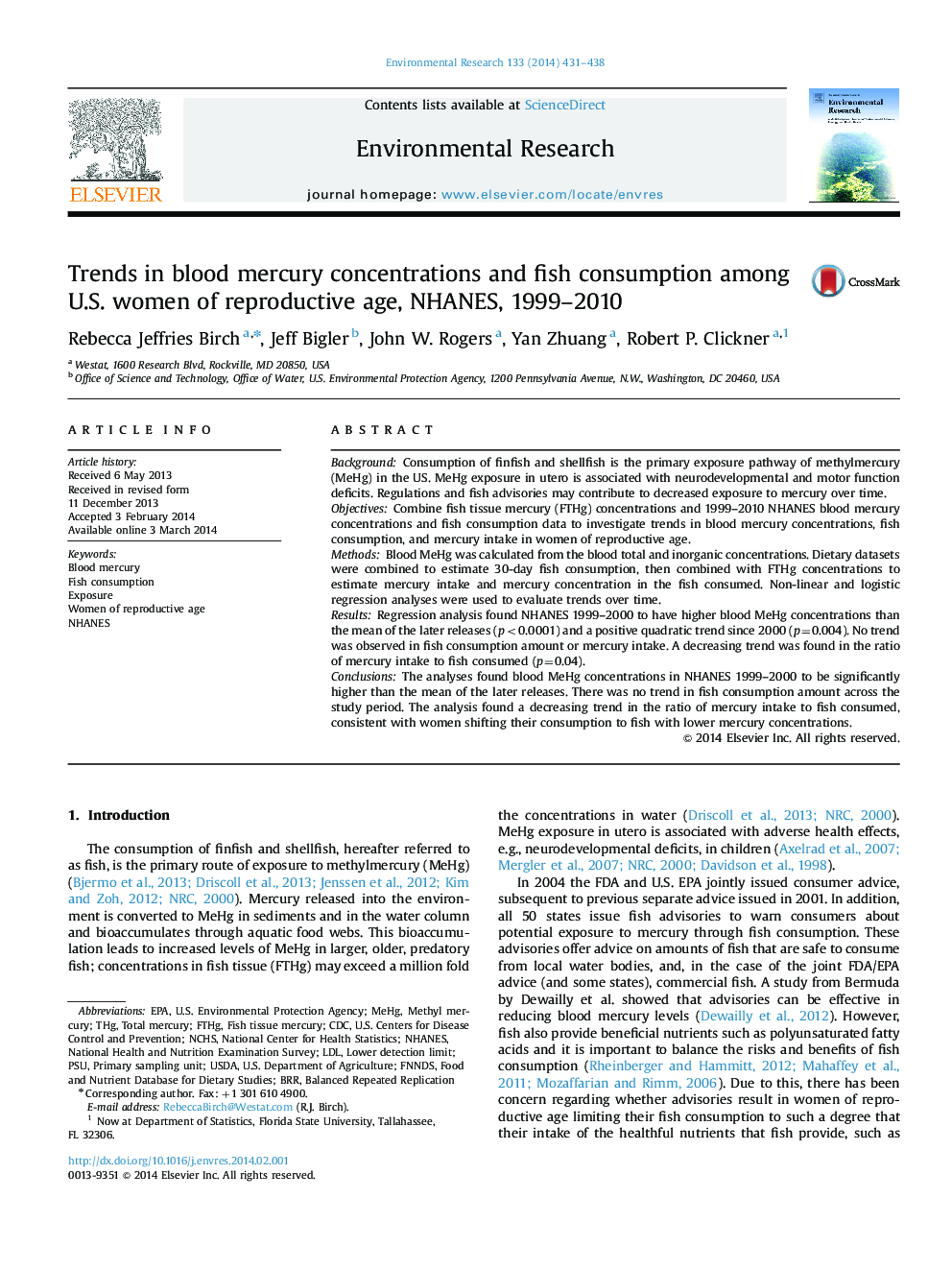| کد مقاله | کد نشریه | سال انتشار | مقاله انگلیسی | نسخه تمام متن |
|---|---|---|---|---|
| 4469750 | 1622568 | 2014 | 8 صفحه PDF | دانلود رایگان |

• Model 1999–2010 NHANES blood mercury and fish consumption data to assess time trends.
• Blood mercury in NHANES 1999–2000 was found to be higher than subsequent years.
• We found a quadratic trend in blood mercury since 1999–2000.
• No changes over time in amount or frequency of fish consumption were found.
• We found a decreasing trend in the mercury concentration of the fish consumed.
BackgroundConsumption of finfish and shellfish is the primary exposure pathway of methylmercury (MeHg) in the US. MeHg exposure in utero is associated with neurodevelopmental and motor function deficits. Regulations and fish advisories may contribute to decreased exposure to mercury over time.ObjectivesCombine fish tissue mercury (FTHg) concentrations and 1999–2010 NHANES blood mercury concentrations and fish consumption data to investigate trends in blood mercury concentrations, fish consumption, and mercury intake in women of reproductive age.MethodsBlood MeHg was calculated from the blood total and inorganic concentrations. Dietary datasets were combined to estimate 30-day fish consumption, then combined with FTHg concentrations to estimate mercury intake and mercury concentration in the fish consumed. Non-linear and logistic regression analyses were used to evaluate trends over time.ResultsRegression analysis found NHANES 1999–2000 to have higher blood MeHg concentrations than the mean of the later releases (p<0.0001) and a positive quadratic trend since 2000 (p=0.004). No trend was observed in fish consumption amount or mercury intake. A decreasing trend was found in the ratio of mercury intake to fish consumed (p=0.04).ConclusionsThe analyses found blood MeHg concentrations in NHANES 1999–2000 to be significantly higher than the mean of the later releases. There was no trend in fish consumption amount across the study period. The analysis found a decreasing trend in the ratio of mercury intake to fish consumed, consistent with women shifting their consumption to fish with lower mercury concentrations.
Journal: Environmental Research - Volume 133, August 2014, Pages 431–438